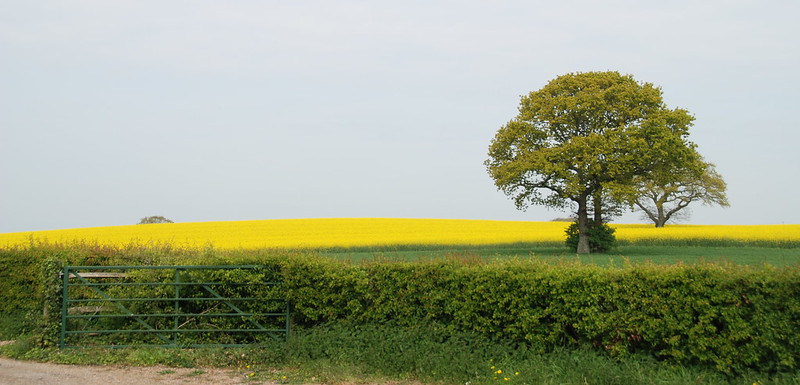Uncertainty amid promise of agriculture climate solutions (Yale 360)
Climate change is already affecting Minnesota, with major implications for water quality, river health and farm operations statewide.
To reduce the impacts of climate change, Minnesota has set a goal to cut 80% of greenhouse gas emissions by 2050.
In order to reach that goal, policymakers and advocates are increasingly looking to croplands as a potential place to sequester greenhouse gases (1) in the soil. While there is some promise in that practice, a recent article from Yale 360 points out that flows of greenhouse gases into and out of soils are complex, and the outcomes can be pretty uncertain.
Storing soil carbon
One solution for carbon sequestration that we know works: returning cropland to its natural state of permanent perennial vegetation. Here in Minnesota, that means turning cropland back to prairie, savanna, wetlands and forest land. That approach mimics pre-settlement landscapes and permanently sequesters plenty of carbon. Plus it's a boon for wildlife and habitat.
However, permanently retiring enough cropland to move the needle on climate change would be fantastically expensive and catastrophic for farming communities that rely on cropland productivity for their economic health.
So, where else can we turn?
Many recent studies have instead explored the potential of regenerative agricultural practices — like no-till farming, using cover crops and growing deeper-rooted perennial crops — to store carbon in the soil. Most results are promising if quite modest.
However, there are some complex factors that can influence the longevity and accuracy of such predictions, three of which surface in the Yale 360 publication:
- Carbon stratification: Most studies look at the so-called “plow layer” — the top-most layer of cropland soils which tends to show increased carbon in response to conservation practices. But University of Minnesota research that looked deeper into the soil profile found that roughly an equal amount of carbon disappeared in the layers below 30 centimeters. UC Davis research likewise found that in some cases, cover cropping conventional soils can increase carbon in the “plow layer” while losing significant amounts of carbon below that depth. This suggests the possibility that on-farm carbon storage practices may simply redistribute carbon in the soil, rather than truly store it.
- Soil microbiology: Increasing soil carbon sometimes revs up soil microbes that consume nutrients and emit greenhouse gases themselves. This could potentially offset any climate benefits of carbon sequestration.
As Yale 360 notes, “In a 10-year experiment that sampled down to 1 meter, soil scientists at Iowa State University found that deep-rooted perennials and cover crops supercharged soil microbes that released much of the crops’ deposited carbon back into the atmosphere.” - Tillage impermanence: It's fairly well accepted that even if soils store more carbon over time, subsequent tillage can quickly give it all right back to the atmosphere. As land ownership and management practices change over years and decades, we can't be certain that future farm operators would continue no-till practices.
The above list is not an exhaustive summary, but hopefully gives you a taste of some of the complexities at play as our understanding of cropland carbon storage grows.
Moving forward: cautious optimism
While these issues are complex and evolving, total certainty is not a prerequisite for action. We know that investments in regenerative agriculture show some promise and are certainly much more resilient to the climate and precipitation patterns we expect to see in the future.
And we're grateful that bright minds from across the academic community, along with many of our agricultural partners, are deeply invested in learning more about how best to optimize soil carbon storage, water quality and agricultural prosperity.
We don’t have all the answers yet, but we're committed to working together with farm organizations, conservation groups, agribusinesses and researchers to better understand the best way forward.
Join us!
Become a member to support innovative work toward clean-water crops, a healthy river and healthy communities.
Read more from the water blog.
______
(1) Carbon sequestration in this article refers to the long-term capture and storage of greenhouse gases such as carbon dioxide in cropland soils as a method to mitigate or reverse the impacts of global climate change.